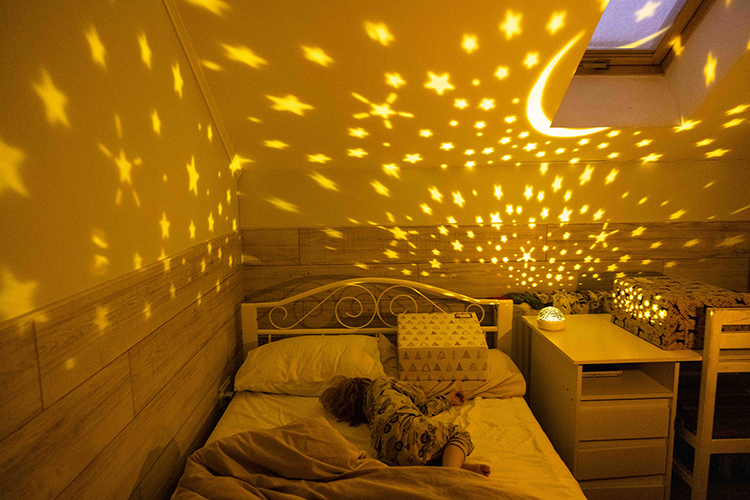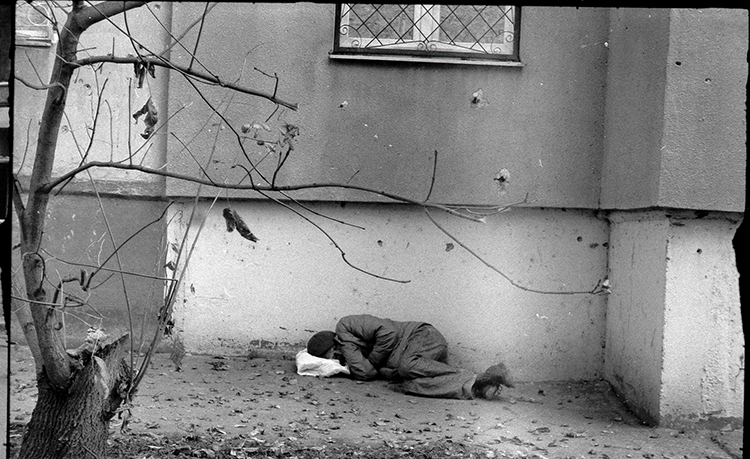This image, taken out of context, stops me and interests me, but reality erases all aesthetic dimensions of the composition. It is difficult to talk about such pictures - like, not like. Of course, the composition attracts, the hunched bodies in a confined space touching each other, the flow of colors and the way the gaze slides from one man's back to the other, but I don't like the situation, the disgusting bodies and men's backs, their arms and over all their faces, which are not visible.

That is, the photo is interesting, but as soon as its story is revealed, disgust arises. I wonder how you can like the image of what you hate for existence itself, for the reality of a stopped moment.
This is one of the photographs of Vladislav Krasnoshchuk, a Kharkiv artist and photographer, that he took in a camp for Russian prisoners of war. About this trip Vladislav and his colleague Olga Kovalyova already narratedfor UAPP.
A moment in the picture — Russian prisoners of war are sitting in a shelter under the camp in the deep rear, because an alarm sounds from above, that is, another ballistic, dagger or MiG in the air, that is, the Russian troops are always threatening us with something. These same prisoners of war, in fact, were also Russian military, and now they could be anywhere. You can list as many towns and villages where they could stand, and at least one It is possible to guess at random, that is, to name the place as accurately as a Russian missile strikes the center of a Ukrainian city.
That is, all these people in the picture could threaten you. The humble bowed backs of these men may have a different appearance, they can be straightened when they are not hidden in the basement under the camp from the threat of their own people. They were all sent down here, of course, and there is no way to know, unfortunately, whether they would have gone down themselves if they had a choice? Vladislav remembered: one of the prisoners replied to journalists that he did not believe that Russia could target them directly. Under the protection of solid walls — sounds very decisive.
Crooked backs, lowered heads and palms obscuring the face. Why don't they want to show their own face? They are also looking for them, do they not want any of their relatives to see them alive, because someone also thinks about them, and this is normal, there is no news in this, no matter how sometimes we would like them to rot here, no one needs them. The philosopher Hannah Arendt struck the truth most accurately, calling evil banal. These people who have crossed our border with weapons, killed and seized our lands, and who would continue to do so if not for captivity, these people can love someone, someone can miss them. So why do they obscure the face? Would they have obscured him if they were photographed near a stele on the border of Donetsk region or a sign “Lisichansk” in order to send a photo to a friend, mother, wife? Why don't they want to be seen like that in the basement during an alarm over the threat of Russian shelling. Perhaps because they think that there was an accident with them — an accident is, after all, about suddenness — that they had weapons against those who brought them down here, but — no? I exaggerate. Most certainly their reasons, like evil, are much more banal.
Nothing to know about these people, and it is not worth it, although from the position of the author I want to know as much as possible. In front of me, however, everything I wanted to see and everything I preferred not to see. Although maybe a book, not — two books read by two men. They do not hide their faces so literally, but they hide them by reading. That is, evil, even banal, reads books. That is, the evil plucked from the general system, the screw pulled out of the great system of evil, reads books.
But there is another detail that is not in the picture. In this camp, as photographers were told, prisoners of war work, for example, making plastic Christmas trees for sale. And soon the New Year holidays and there is every chance that at least one such will be in our house for Christmas.
***
I saw criticism of the photographs of Vladislav Krasnoshchuk, because with black and white film and the way of printing he absorbs modern events into the images of the war of the 20th century, stylizes this war as another. But maybe these pictures are so reminiscent of the war of the last century, because it is about an insurmountable experience and an unlived moment? Perhaps the Second or First World, shot on modern cameras, will be no different from the present, if only not in technique? Perhaps evil, even banal, is just evil — how not to shoot, where not to shoot from and in what way not to show the picture?
Photo: Vladislav Krasnoshchuk
Text: Vera Kuriko



%20(750%20x%20360%20%D0%BF%D1%96%D0%BA%D1%81.)%20(3).png)

















